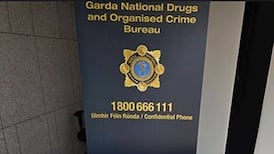Like a museum artefact, the Covid tracker app lives on in many of our phones, though we probably haven’t looked at it for an age.
Mine tells me the app, which is due to be decommissioned shortly, hasn’t had a version update for almost a year. Still, 11,881 users checked into it on Tuesday.
Why they bothered is hard to fathom. The app tells us 292 Covid cases were reported on Monday and 17 deaths occurred in the last week. There is also information about the number of vaccine doses administered so far – almost 11 million.
Providing information is well and good, but the app was created to help trace people who were potentially infected with the virus. It was designed to record if a user was in close contact with someone else who had the app, by exchanging anonymous codes held on the phones. People who tested positive could choose to anonymously tip off other app users with whom they had been in close contact.
RM Block
Though it was a popular success, it never really succeeded in this objective. An amazing 4.34 million registrations of the app were recorded, yet this converted into 1.7 million users – not bad, but in the eyes of many experts, not enough to make it an effective contact tracing tool.
Ultimately, fewer than 25,000 people have uploaded their positive test results to enable contact tracing and just 47,000 were sent a close contact alert. Whether the recipients of these alerts paid any heed is not known.
One study found only 4 per cent of people who tested positive for Covid uploaded their close contact details to the app. Over a period when 2 million people needed to be contact traced, just 21,000 had uploaded their close contacts.
UK research estimated that at least 56 per cent of a population would need to be actively using a contact tracing app for it to be effective.
Another Lancet study pushed this figure up to 80 per cent, when account is taken of real-world conditions such as testing and tracing limitations and people’s adherence to self-quarantine.
Even in Iceland, regarded as having a model app with 40 per cent usage, officials said manual tracing was more effective.
Latterly, the app was used as an electronic wallet for storing Covid travel certs, but the last requirement for these in the EU lapses in the summer.
The under-utilisation of the app obviated initial concerns about privacy from human rights groups. In putting it to bed later this year, Minister for Health Stephen Donnelly is following the example of other European countries that have long since decommissioned their apps.
Mr Donnelly put the cost of developing the app at €800,000, plus €20,000 a month in continual support costs for a further six months. This was a lot less than the €20 million Germany spent on its app, he said.
Ironically given its fate, the Irish app ended up as a model for products developed in other countries. And while it may not have worked in the end, the amount spent on it was small beer compared to the €25 billion cost of the pandemic to the State.











